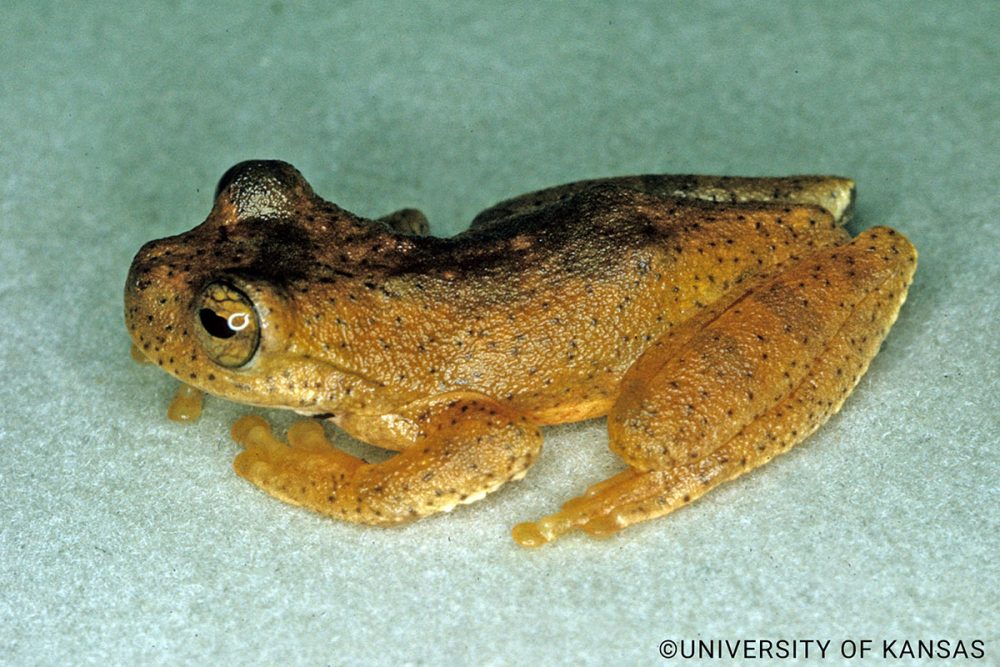About
The Oaxacan yellow tree frog has not been recorded since the 1960s and recent surveys to locate it have been unsuccessful.
This has always been a very rare species, but it has undergone a serious decline. This decline is due to the destruction and degradation of its cloud forest habitat which has occurred due to pressure from infrastructure development for human settlements and other anthropogenic activities. The Chytrid fungus has also had a large part to play in the 80% decline in this species population over the last three generations. This species was previously included in the genus Hyla but has recently been moved to the new genus Megastomatohyla. They are part of the Hylidae or “Treefrogs” families, which have a fossil record going back to the Palaeocene (65 to 53 million years ago), suggesting the hylid frog lineages originated either in the late Cretaceous or early in the Cenozoic period, around the time of the extinction of the dinosaurs. The Treefrogs diverged from all other amphibians around 50 million years ago, which makes them as distinct from their closest relatives as chinchillas are from porcupines. The species does not occur in any protected areas. There is need for further survey work in suitable habitat in order to determine whether or not this species still survives in its natural range.
- Order: Anura
- Family: Hylidae
- Population: Possibly extinct
- Trend: decreasing
EDGE Score
Distribution
This species is known from the Sierra Madre del Sur in southern Oaxaca, Mexico, at between 1,200-1,700 metres above sea level.
Habitat and Ecology
This species inhabits cloud forests. It lives on low vegetation along streams and breeds in streams.
